Do you wish to know do high-quality focus stacking? Are you curious about creating superb focus-stacked pictures?
You’ve come to the appropriate place.
As a result of on this article, I’m going to let you know
every little thing you could find out about focus stacking. I’ll clarify what it’s, how
to do it, and software program suggestions for pulling off unbelievable focus stacks.
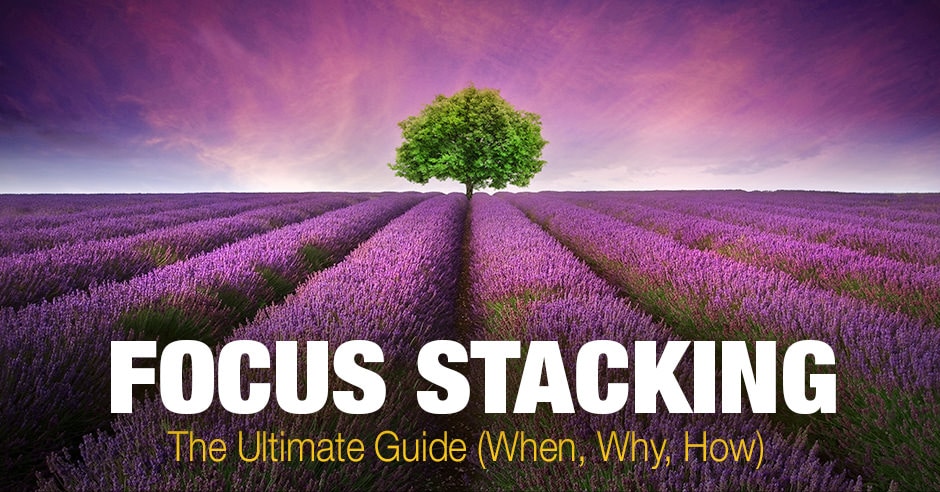
Now, focus stacking is a complicated
photographic approach, one which intimidates numerous inexperienced persons. However it’s not
really that onerous–you simply need to know a number of fundamental methods, and software program will
care for the remaining.
The truth is, loads of panorama and macro
photographers use focus stacking often.
Why?
As a result of panorama photographers and macro photographers deal usually with scenes which have numerous depth. And whereas an aperture of f/16 and even f/22 would possibly appear to be it could possibly simply provide the needed depth of discipline, that’s not at all times the case.
Plus, at slim apertures, you find yourself with softness because of diffraction–which a little bit of focus stacking can stop.
Now let’s take a more in-depth have a look at the character of
focus stacking:
What’s Focus Stacking?
Focus stacking is a method of coping with a restricted depth of discipline.
Focus stacking is a complicated images strategy of taking a number of pictures of the identical scene however targeted at totally different factors. Then mixing the pictures collectively–that’s, stack them–with a purpose to create a scene with an prolonged depth of discipline that’s sharp all through.
That’s, focus stacking will be sure that your
picture is sharp all through–even when a single shot leads to a picture with
inadequate depth of discipline.
Observe that focus stacking is pointless in
most conditions.
Portrait photographers, as an example, can usually get the depth of discipline they want with a reasonably extensive aperture.
Avenue photographers can get the required depth of discipline for his or her topics with an aperture between f/2.8 and f/8.
And wildlife photographers typically work within the f/4 to f/8 aperture vary with a purpose to get the required depth of discipline when photographing wildlife.
Focus Stacking in Panorama Images
Now, a panorama photographer typically requires that all the scene be sharp, from a rock within the foreground to a mountain within the background.
Generally, it’s attainable to drag this off with
a single picture through the use of an aperture of round f/11-f/16.

However generally you received’t have sufficient depth of
discipline to get all the scene sharp, even when you rigorously set your focus to
the hyperfocal distance.
That’s when focus stacking turns into needed.
As a result of if you wish to seize a shot that features a close to foreground aspect
(similar to a rock) and a distant background aspect (similar to a mountain), then a
slim aperture won’t minimize it.
Focus Stacking in Macro Images
Macro images, product images, and
nonetheless life images provide related tales. It is because excessive
magnifications restrict your depth of discipline–so {that a} extremely magnified picture
taken at f/16 will solely have a sliver in focus, regardless of the slim aperture.
Therefore the explanation for focus stacking, so as
to maintain all the picture as sharp as attainable. A macro photographer could wish to
seize a wonderfully sharp photograph of a wasp’s head. However that is unimaginable with a
single shot, even one at f/22, assuming you’re capturing at excessive
magnifications.
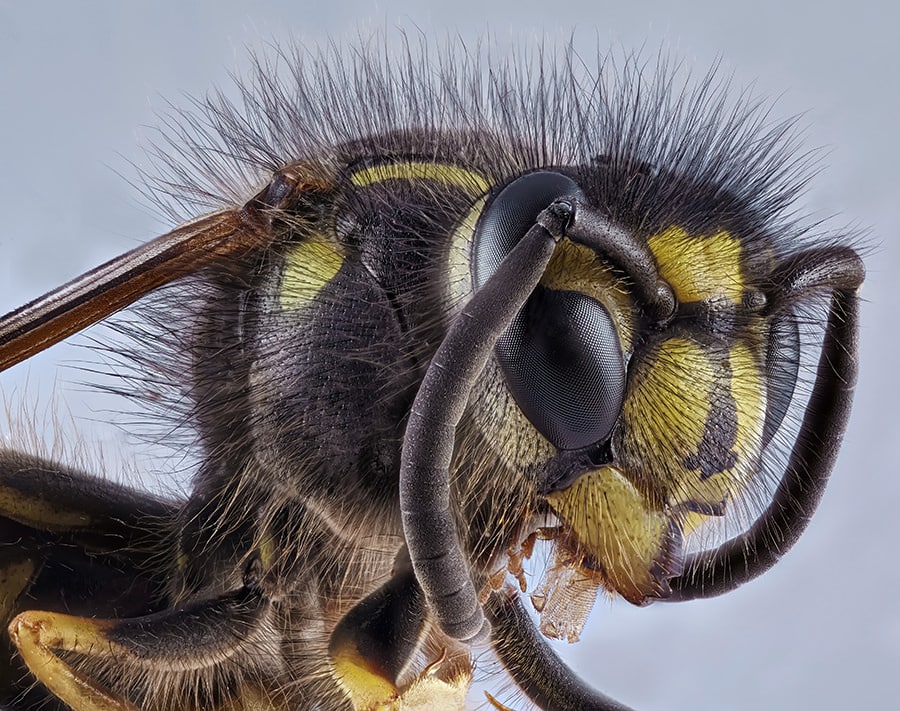
Make sense?
Which brings me to the following part:
How Focus Stacking Works: A Fast
Information
Technically, the method of focus stacking consists of two separate methods: Focus Bracketing and Picture Merging.
1. Focus Bracketing
First, you could carry out focus bracketing. This
is the method of taking a number of photographs which might be targeted at totally different distances.
With a view to do high-quality focus bracketing, you’ll wish to be sure to’re focusing incrementally all through the scene so that you just cowl each space with a picture. So when you’re photographing the scenic mountain/rock scene I discussed above, you’ll wish to seize a shot that focuses on the foreground, a shot that focuses on the midground, and a shot that focuses on the background.
Observe that the variety of photographs in your focus
bracketing collection will rely upon the depth of the scene. A panorama shot with a
close to foreground aspect will usually take solely two or three photographs to stack. However a
macro shot with the pinnacle of an insect would possibly take 10 photographs at affordable
magnifications, and 20, 30, and even 100 photographs at ultra-high magnifications.
When you’ve carried out the required focus bracketing,
it’s time to check out the second approach:
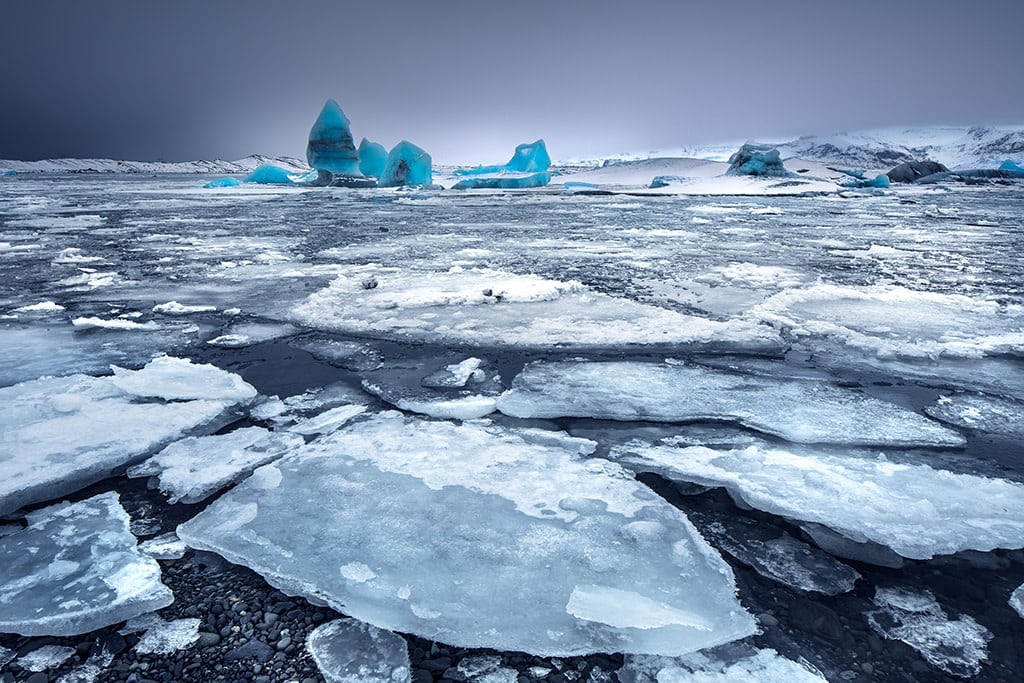
2. Picture Merging
Throughout this a part of the method, you’re going to be loading the collection of bracketing photographs to your laptop and mixing them through a software program program. Whereas merging pictures might be pretty automated, there are guide methods of stacking pictures–and there are some conditions the place that is excellent (mentioned beneath).
Whereas there are a variety of focus-stacking
applications on the market, a number of the greatest focus stacking might be executed with
full-featured photograph editors similar to Adobe Photoshop CC or Affinity Picture.
When to Use Focus Stacking
As I’ve defined above, you’re going to wish
to consider focus stacking each time you’ve gotten inadequate depth of discipline to
deal with a scene with a single shot.
However what precisely does this imply?
Depth of discipline refers back to the quantity of your
shot that’s sharp. And the depth of discipline is influenced by the aperture–however
it additionally is determined by the gap between your digicam and the purpose of focus, as
effectively as your lens’s focal size.
In order your topic turns into nearer to the
digicam, your depth of discipline turns into extra restricted (assuming you concentrate on the
topic, that’s).
For this reason it may be laborious to determine whether or not
to focus stack:
As a result of your depth of discipline modifications as your
digicam’s distance to the purpose of focus modifications.
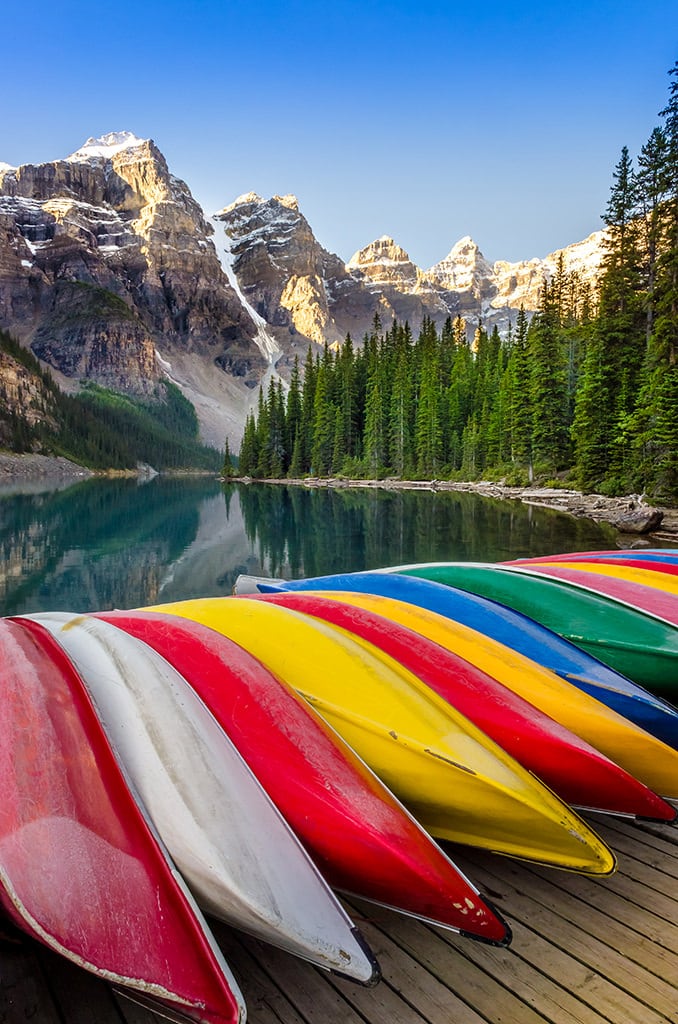
That is the place hyperfocal distance turns into vital. Hyperfocal distance refers back to the level of focus that may maximize the quantity of scene that’s sharp.
Focusing on the hyperfocal distance is a method of utilizing your accessible depth of discipline as a lot as attainable–as when you’re spreading a web to cowl the biggest attainable space. Should you focus in entrance of the hyperfocal distance, you’ll find yourself with a blurry background. And when you focus behind the hyperfocal distance, you’ll find yourself with a blurry foreground.
The rationale this issues is since you ought to at all times focus on the hyperfocal distance
when doing a single (unstacked) publicity of a scene. Should you focus on the
hyperfocal distance and also you fail to get all the scene sharp, it’s an indication
that focus stacking is important.
After all, with a purpose to determine whether or not focus
stacking is important you’ll must first decide the hyperfocal distance,
which might be executed through an app similar to PhotoPills.
So one option to assess whether or not focus stacking is
positively needed is to shoot the scene, taking care to focus on the
hyperfocal distance.
Then zoom in in your digicam LCD to verify the sharpness each within the foreground and the background. If the closest foreground aspect and essentially the most distant background aspect are sharp, then there’s no must focus stack. But when both space is blurry, then focus stacking is required!
Guide Focus Stacking
Should you’re solely stacking a number of pictures (two or
three), and if the scene is a reasonably deep panorama, then you should use guide
focus stacking to create the ultimate shot.
First, seize two or three pictures, focusing
all through the scene (the primary shot can concentrate on the closest aspect, the final
shot can concentrate on essentially the most distant aspect).
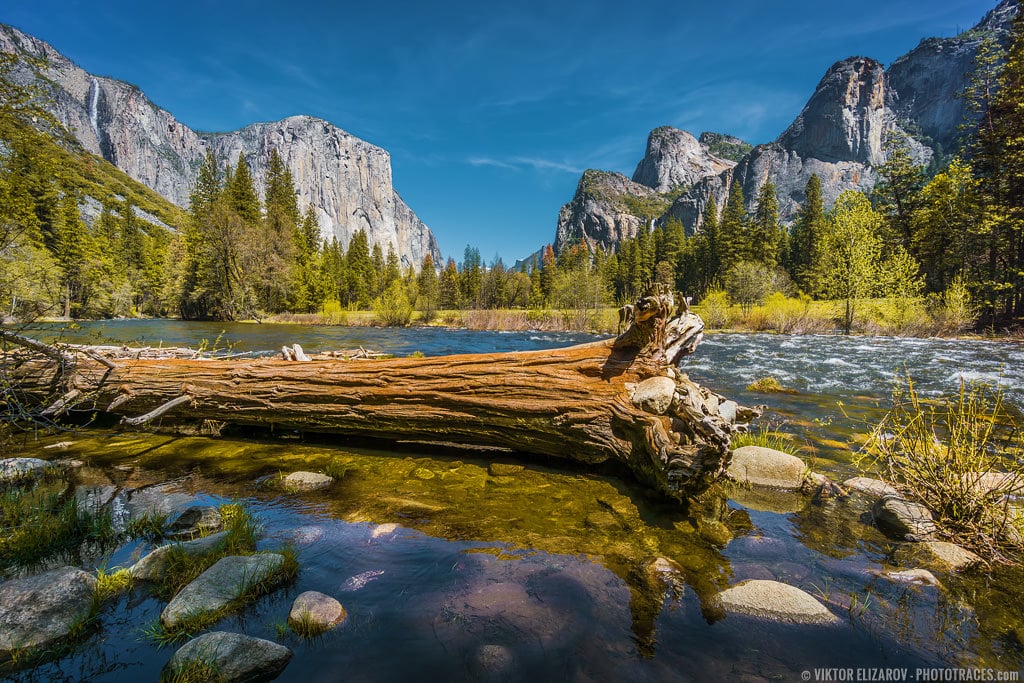
Then open your pictures as layers in Photoshop, ensure they’re completely aligned–after which mix them collectively utilizing fundamental picture masking, in order that solely the sharp components of every picture are represented within the closing photograph.
Sadly, it’s much more tough to
stack macro pictures manually. Similar with pictures with 5 or extra photographs.
So for these, I like to recommend utilizing automated
focus stacking:
Automated Focus Stacking
Should you’re working with greater than two or three
photographs, then you definitely’re positively going to wish to automate your focus stacking.
This consists of the main focus bracketing portion of
the approach, in addition to the merging course of.
For a very long time, the one option to do complicated
focus bracketing was by the use of costly gear.
However today, even mid-range cameras have
focus stacking performance in-built.
As an illustration, the Nikon D850 has focus
bracketing, as does the Fujifilm X-T2, the Fujifilm X-T3, and the Canon EOS RP.
These automated strategies of bracketing will
focus the lens at varied factors all through the scene (so that you don’t need to
battle with focusing by yourself).
In-Digicam Focus Bracketing and Focus Stacking
Whereas plenty of cameras have focus
bracketing capabilities in-built, some producers push boundaries even
additional.
As an illustration, some Lumix and Olympus fashions
haven’t solely focus bracketing performance, but additionally focus merging talents.
That method, you possibly can focus bracket and focus stack whereas within the discipline, and
you don’t need to do any work with software program in a while.
Not all cameras have this functionality, nevertheless,
which is whenever you’ll want to show to focus stacking software program.
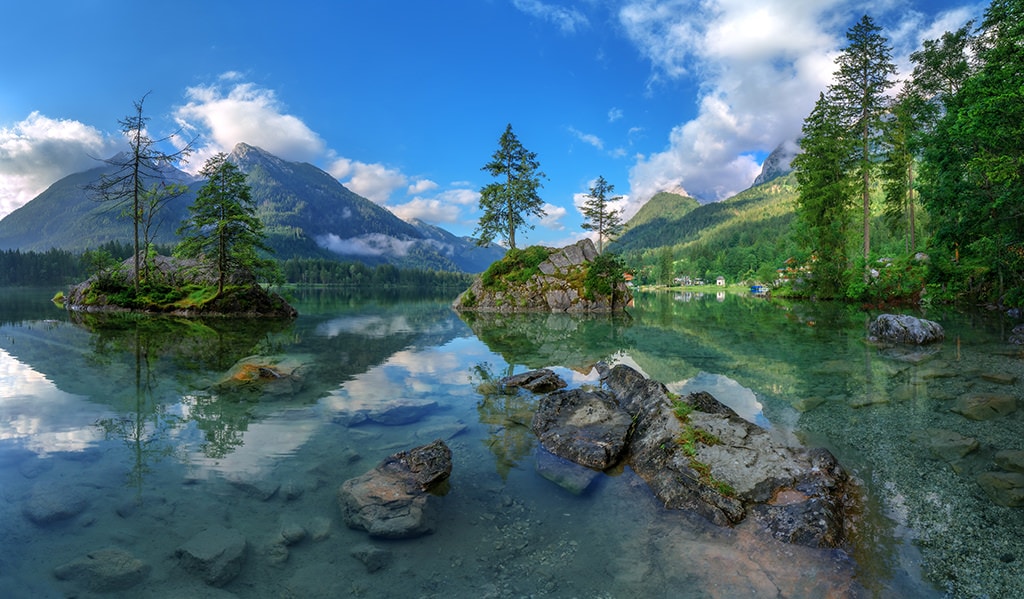
Focus Stacking Software program
In terms of selecting focus stacking
software program, you’ve gotten two choices:
Full-featured photograph editors that embrace focus
stacking capabilities, and specialised focus stacking software program.
First, let’s check out the extra common
focus stacking choices:
Focus Stacking in Adobe Photoshop
CC
Photoshop CC is likely one of the best methods to
focus stack, as a result of the stacking capabilities are constructed into the Photoshop
menu. You even have the power to do guide stacking (as described above), or
to make different edits to your pictures earlier than or after focus stacking.
That mentioned, when you haven’t used Photoshop
beforehand, there generally is a little bit of a studying curve–plus, you’ll need to
buy an Adobe CC subscription, which is dear.
Focus Stacking in Affinity Picture
Affinity Picture is a wonderful various to
Photoshop, with out the issues that include a subscription mannequin. The main focus
stacking software program included in Affinity Picture is extraordinarily succesful; it’s as
efficient as Photoshop.
Plus, Affinity Picture prices far lower than
Photoshop in the long term, with an up-front charge of simply $49.
Focus Stacking in Lightroom
Sadly for devoted customers, focus
stacking isn’t a performance that’s offered by Lightroom. You’ll must
export your pictures to Photoshop, or to a different program completely.
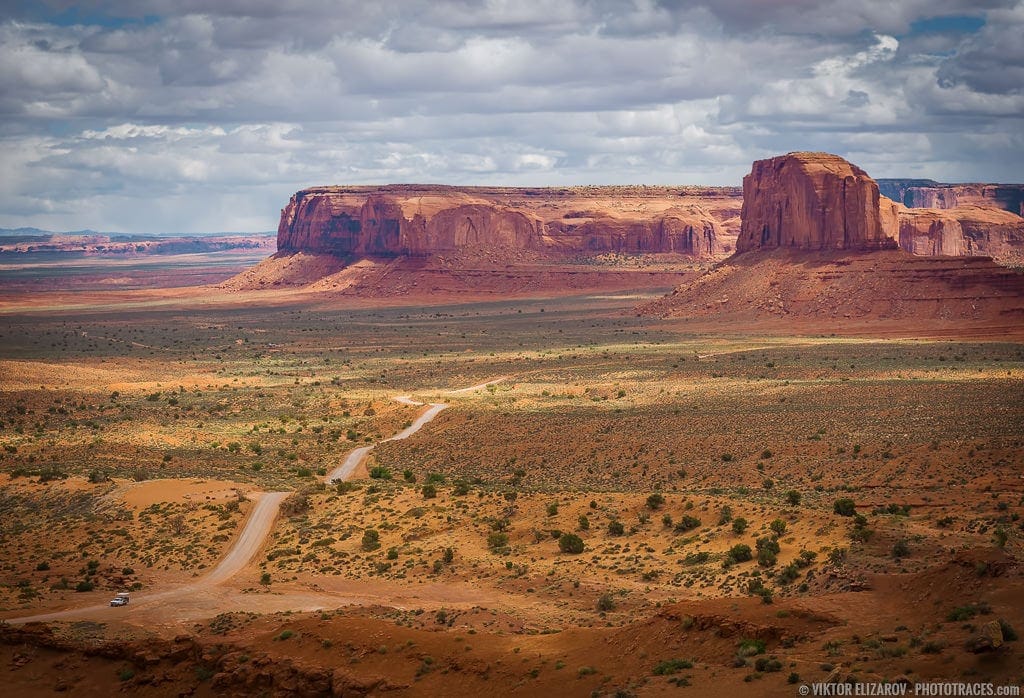
Do You Want a Devoted Focus
Stacking Program?
For many panorama photographers, a program
similar to Photoshop CC or Affinity Picture is greater than sufficient. You possibly can simply
stack a number of pictures, both manually or via layer-based enhancing.
However some photographers–macro photographers,
specifically–like to make use of devoted focus stacking applications. These are usually
extra succesful, particularly with giant numbers of pictures, and is an effective way to go
as you focus stack extra often.
The 2 hottest choices on the market are
Zerene Stacker and Helicon Focus. However Zerene is pretty costly if you would like
all of the options ($189 USD), which is why I like to recommend Helicon Focus to
inexperienced persons who desire a devoted choice; it prices $30 USD for a one-year license,
or $115 USD for a lifetime license.
Conclusion
Focus stacking is a considerably technical methodology
in images–however it could possibly enormously broaden your panorama and macro images
arsenal.
So when you’ve ever wished to attempt focus
stacking, now’s your probability!
